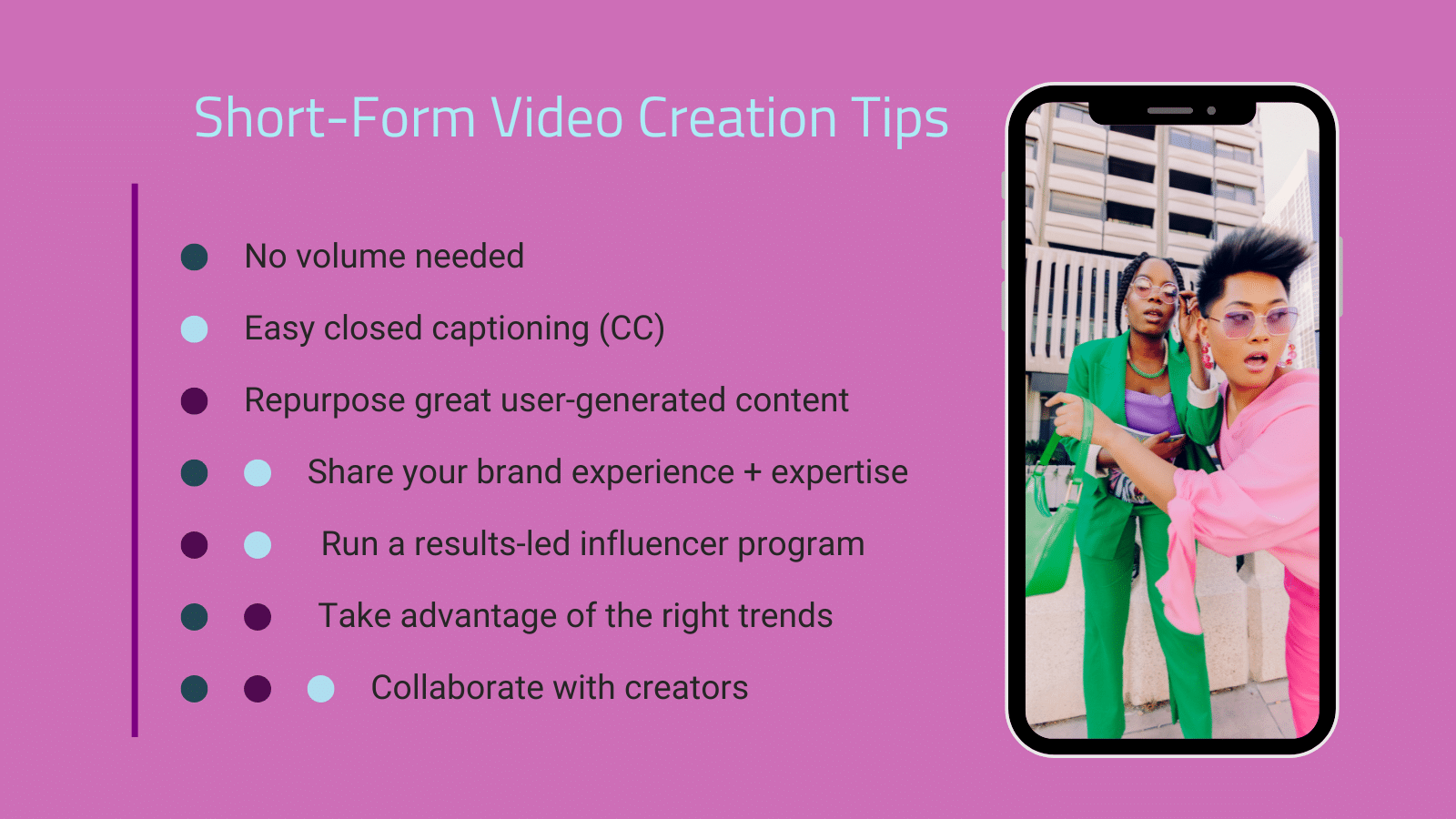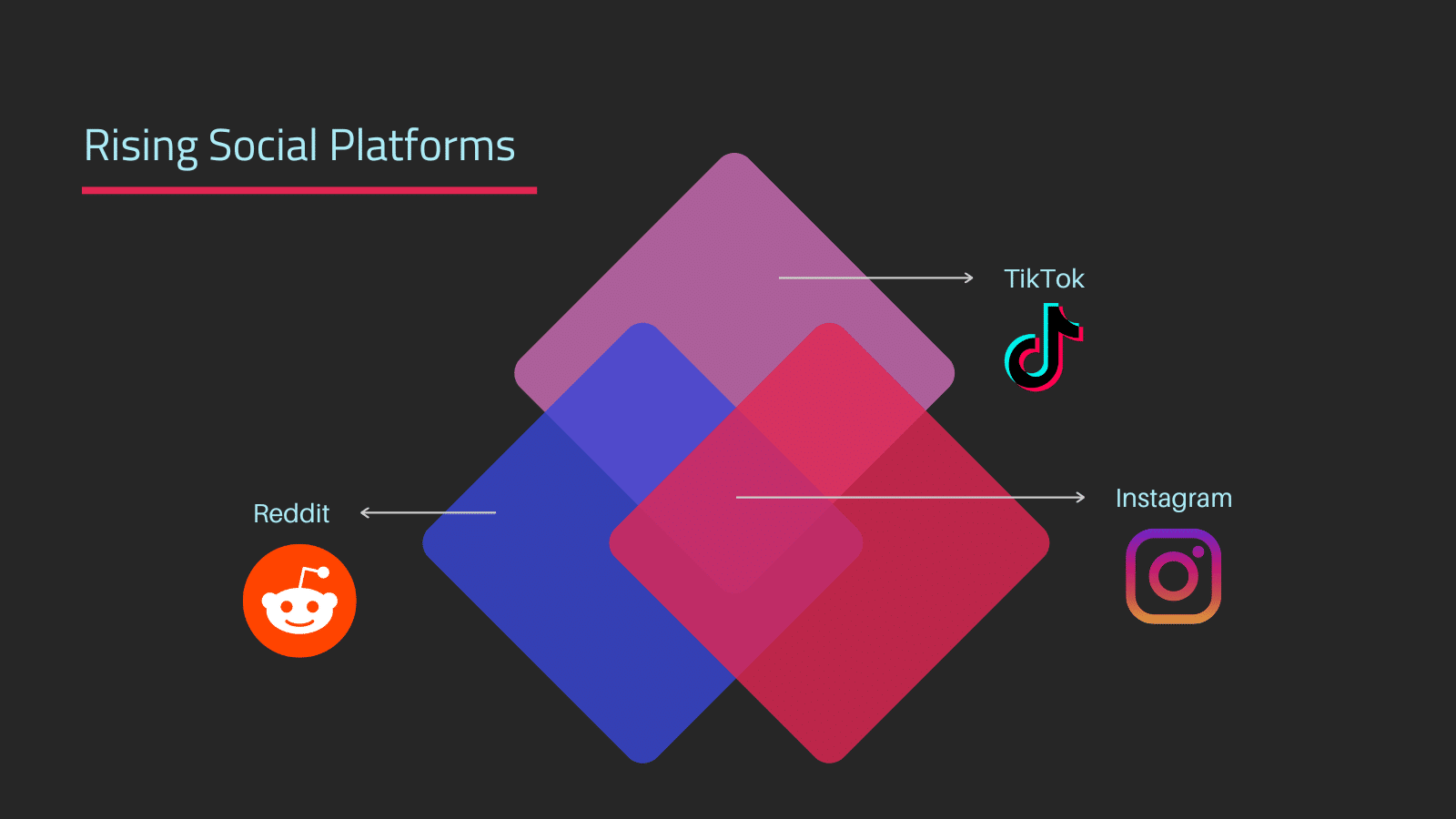Additional Author: Amanda Goncalves, Director, Sales & Marketing Strategy
People spend more than half of their time on social platforms watching videos. And brands are prioritizing short-form social videos within their strategy.
Why? Short-form videos on social are engaging and entertaining, showing your brand personality, educating your audience, and creating personal connections with consumers. Bringing in high ROI, brands are doubling down, with video now accounting for over half of all US social network ad revenues. Through video, brands can build strong, authentic connections — person by person — within social spaces that are still growing.
As consumers spend more time watching short videos, averaging 15 to 60 seconds in length, social platforms work to refine their monetization strategies. This means more new opportunities for brands to capitalize on the high ROI short-form videos can offer.
Here’s what to know about short-form social videos, including creative best practices, how to plan your media, and which platforms consumers are flocking to next.
1. Invite People Into Your Brand Story
People on social are looking to make connections — with other people, brands, and communities. Video builds and strengthens those connections when brands focus their short-from video on storytelling and engagement. “Less sales, more story” is a refrain sung by many creators. Connecting the value of your products and services to the people ready to learn about, ultimately choose, and amplify their loyalty means integrating your short video ads seamlessly into the content already in-channel.
Here are ways to ensure your short videos don’t just capture attention but build a community of loyalists ready to tell your brand story.
- Most people watch short-form videos without the sound on. Create video assets that are impactful with no volume needed, and include short, digestible closed captioning (CC). Editable CC and no voice audio are especially effective when running multi-language campaigns.
- User-generated content (UGC) is seen as authentic and trustworthy. Your strategy can account for this in several ways: mirroring types of top-performing content by channel, collaborating with vetted influencers and creators, and repurposing UGC shared by your brand loyalists to develop your ad creative. Sharing the experience of your brand — and your best customers’ experiences is a critical aspect of marketing today.
- Your influencer and creator collaborations should be strategic. As lines blur between brand and creator content, a results-led program that’s fully integrated into your organic and paid efforts ensures people are creating content that aligns with your business goals.
Strengthen brand-best customer connections by developing short videos that seamlessly integrate into their social surroundings. Making smarter decisions for your social videos includes examining how your platform choices impact your creative and vice versa.

2. Diversify Your Social Video Partners
Where brands spend their ad dollars matters. TikTok. Instagram. Snapchat. These are well-known channels where short videos do well, but many other platforms are in the game, too. For example, YouTube Shorts. Self-described as “YouTube, but shorter,” YouTube Shorts videos are 60 seconds or less, and they received 135% more views QoQ. Shorts are just one in a growing list of players looking to make their platform the platform of choice.
What’s your gameplan for:
- TikTok
- YouTube Shorts
- Snapchat
Social networks are copying each other, leading to similar format offerings and cross-posting. Create your short-form video assets in ways that allow you to experiment with emerging opportunities. Save resources in your creative budget by aligning similar creative assets across multiple social networks, then compare, test, and learn. This doesn’t mean you should use identical videos across a large swath of social video platforms. Instead, streamline your creative to make platform-specific updates that generate the strongest performance. Learn more about which platforms your brand should prioritize.
3. Rethink Your Social Ad Planning
Prioritize the most consumed platforms in your media planning and buying. Nationally, adults have been shifting focus from some social media platforms to others. American adults are spending less time with Facebook, Snapchat, and Twitter. However, adults in the U.S. are spending more time on the following platforms:
- TikTok
What’s your current media planning strategy for these three platforms, and do you need to refocus your spend? TikTok has seen a recent explosion of new users, stemming in part from the news cycle.

4. Know What to Do About TikTok
If your brand wants to reach younger consumers, TikTok remains a must-buy. While CEO Shou Zi Chew recently testified before Congress, and there have been calls for a TikTok ban, TikTok remains a force. While TikTok is used only second to Snapchat among consumers ages 12 to 24 years old, TikTok has a significantly higher time spent on the platform. Users spend 25 more minutes daily on Tiktok than on Snapchat, with an average of 59 minutes spent on TikTok.
TikTok is also introducing ad formats and measurement solutions to support lower-funnel initiatives, sharing on TikTok for Business, “1 in 3 TikTok users bought a product because they saw it on TikTok.” Its focus on providing brands will holistic advertising support means more opportunities to optimize your TikTok marketing and connect further with the 1 billion consumers on the platform.
What about a TikTok ban? In the event that TikTok is banned, it likely wouldn’t happen overnight, and brands would have some time to recalculate their social planning strategies. Monitoring consumer behavior, as well as the news cycle, helps provide a balanced assessment of what could be expected next. The rise and fall of platforms and technology is part and parcel of digital marketing — thinking smarter and diversifying their planning strategy helps brands navigate and come out ahead of each change.
Take the next step
As people spend more time watching short videos on their favorite social platforms, brands should prioritize this ad and content type. Are your short-form videos following the best practices outlined above? More brands are working with vetted influencers and creatives to share the experience and value of their products and services. How have you incorporated influencer and creator content into your marketing strategy? Are you seeing real returns on your investment? A results-led B2C strategy includes creating and maximizing engaging, actionable creative and content for the right social platforms.
Ultimately, is your brand reaching, interacting, and activating the people who could become loyalists? If your brand doesn’t know who to reach out to, how to connect with them, and how they consume their favorite media, you’re not realizing the full potential of your marketing performance. One-on-one connections that create your best customers are rooted in holistic audience science, developing and building a community of the perfect people for your products.
Smarter social campaigns are only part of a data-centric, performance-driven strategy, giving you the power to know and do more. Dig deeper into how to improve your brand creative, or let’s talk about how to achieve more for your marketing — and your business.






